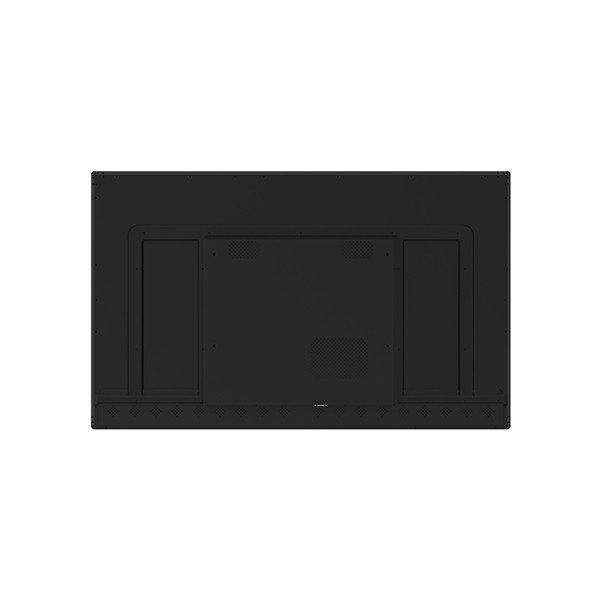Smart signage has become an integral part of modern business communication, offering dynamic and engaging ways to convey information to customers. As a smart signage supplier, I have witnessed firsthand the evolution of this technology and the importance of understanding its hardware components. In this blog post, I will delve into the key hardware elements that make up a smart signage system, providing insights into their functions and significance.
Display Panel
The display panel is the most visible and crucial component of a smart signage system. It is responsible for presenting the content to the audience in a clear and vibrant manner. There are several types of display panels available in the market, each with its own unique features and advantages.
LCD (Liquid Crystal Display)
LCD panels are the most commonly used display technology in smart signage. They offer a good balance between cost, performance, and image quality. LCD panels work by controlling the passage of light through liquid crystals, which are sandwiched between two layers of glass. This allows for precise control of the pixels, resulting in sharp and clear images.
One of the key advantages of LCD panels is their energy efficiency. They consume less power compared to other display technologies, making them a cost-effective option for long-term use. Additionally, LCD panels are available in a wide range of sizes and resolutions, allowing for flexibility in designing the signage system.
LED (Light Emitting Diode)
LED panels are another popular choice for smart signage, especially for outdoor applications. LED panels use light-emitting diodes to create the image, which provides high brightness and contrast ratios. This makes them ideal for use in bright sunlight or other high-contrast environments.
LED panels are also known for their durability and long lifespan. They can withstand harsh weather conditions and are less prone to damage compared to LCD panels. However, LED panels are generally more expensive than LCD panels, which may limit their use in some applications.
OLED (Organic Light Emitting Diode)
OLED panels are a relatively new display technology that offers several advantages over LCD and LED panels. OLED panels use organic compounds that emit light when an electric current is applied, eliminating the need for a backlight. This results in deeper blacks, higher contrast ratios, and wider viewing angles compared to LCD panels.


OLED panels are also thinner and lighter than LCD and LED panels, making them ideal for use in applications where space is limited. However, OLED panels are currently more expensive than LCD and LED panels, which may limit their widespread adoption.
Media Player
The media player is responsible for storing and playing the content on the display panel. It is essentially a computer that runs a media player software, which can be used to manage and schedule the content. There are several types of media players available in the market, each with its own unique features and capabilities.
Standalone Media Player
A standalone media player is a dedicated device that is designed specifically for playing media content on a display panel. It typically comes with a built-in hard drive or solid-state drive for storing the content, as well as a network interface for connecting to the internet or a local network.
Standalone media players are easy to set up and use, and they offer a high level of reliability and performance. They are also relatively inexpensive compared to other types of media players, making them a popular choice for small to medium-sized businesses.
PC-Based Media Player
A PC-based media player is a computer that runs a media player software. It can be a desktop computer, a laptop, or a mini PC. PC-based media players offer a high level of flexibility and customization, as they can be easily configured to meet the specific needs of the signage system.
PC-based media players also offer a wide range of connectivity options, including Ethernet, Wi-Fi, and Bluetooth. This allows for easy integration with other devices and systems, such as cameras, sensors, and touchscreens. However, PC-based media players require more technical expertise to set up and maintain, and they may be more expensive than standalone media players.
Cloud-Based Media Player
A cloud-based media player is a media player that is hosted on a cloud server. It allows for remote management and scheduling of the content, as well as real-time updates and monitoring. Cloud-based media players offer a high level of scalability and flexibility, as they can be easily expanded or contracted to meet the changing needs of the signage system.
Cloud-based media players also offer a high level of security and reliability, as the content is stored on a secure cloud server. However, cloud-based media players require a reliable internet connection, and they may be subject to latency issues, especially in areas with poor internet connectivity.
Mounting and Enclosure
The mounting and enclosure are important components of a smart signage system, as they provide support and protection for the display panel and other hardware components. There are several types of mounting and enclosure options available in the market, each with its own unique features and advantages.
Wall Mount
A wall mount is the most common type of mounting option for smart signage. It allows for easy installation of the display panel on a wall, which provides a stable and secure mounting solution. Wall mounts are available in a wide range of sizes and styles, allowing for flexibility in designing the signage system.
Floor Standing
A floor standing mount is another popular option for smart signage, especially for large displays. It allows for easy installation of the display panel on the floor, which provides a more prominent and visible display. Floor standing mounts are available in a variety of styles and configurations, including single-sided, double-sided, and multi-sided displays.
Enclosure
An enclosure is a protective housing that is used to protect the display panel and other hardware components from damage, dust, and moisture. Enclosures are available in a wide range of materials and styles, including plastic, metal, and glass. They can also be customized to meet the specific needs of the signage system, such as providing ventilation, access ports, and security features.
Connectivity and Networking
Connectivity and networking are essential components of a smart signage system, as they allow for the transfer of data and content between the media player and the display panel, as well as between the signage system and other devices and systems. There are several types of connectivity and networking options available in the market, each with its own unique features and capabilities.
Ethernet
Ethernet is the most common type of networking technology used in smart signage systems. It provides a high-speed and reliable connection between the media player and the display panel, as well as between the signage system and other devices and systems. Ethernet is also widely supported by most media players and display panels, making it a popular choice for smart signage systems.
Wi-Fi
Wi-Fi is a wireless networking technology that allows for easy and convenient connectivity between the media player and the display panel, as well as between the signage system and other devices and systems. Wi-Fi is especially useful in applications where it is difficult or impractical to run Ethernet cables, such as in outdoor or mobile applications.
Bluetooth
Bluetooth is a short-range wireless networking technology that allows for easy and convenient connectivity between the media player and the display panel, as well as between the signage system and other devices and systems. Bluetooth is especially useful in applications where it is necessary to transfer data or content over a short distance, such as between a smartphone and a media player.
Sensors and Interactive Devices
Sensors and interactive devices are becoming increasingly important components of smart signage systems, as they allow for the creation of more engaging and interactive experiences for the audience. There are several types of sensors and interactive devices available in the market, each with its own unique features and capabilities.
Touchscreen
A touchscreen is an interactive device that allows the audience to interact with the signage system by touching the display panel. Touchscreens are available in a wide range of sizes and technologies, including resistive, capacitive, and infrared. They can be used to create a variety of interactive experiences, such as touch-based menus, games, and surveys.
Camera
A camera is a sensor that can be used to capture images and videos of the audience. Cameras can be used to create a variety of interactive experiences, such as facial recognition, motion detection, and augmented reality. They can also be used for security and surveillance purposes.
Motion Sensor
A motion sensor is a sensor that can detect the movement of the audience. Motion sensors can be used to create a variety of interactive experiences, such as triggering the display of content when the audience approaches the signage system. They can also be used for energy-saving purposes, such as turning off the display panel when there is no one in the vicinity.
Conclusion
In conclusion, smart signage is a powerful tool for businesses to communicate with their customers in a dynamic and engaging way. Understanding the hardware components of a smart signage system is essential for designing and implementing an effective signage solution. By choosing the right display panel, media player, mounting and enclosure, connectivity and networking options, and sensors and interactive devices, businesses can create a signage system that meets their specific needs and objectives.
If you are interested in learning more about smart signage or would like to discuss your signage requirements, please feel free to contact us. We are a leading smart signage supplier that offers a wide range of products and services to meet the needs of businesses of all sizes. Whether you are looking for Large Digital Signage, Floor Standing Digital Signage, or Commercial Digital Signage Displays, we have the expertise and experience to help you create a signage system that stands out from the competition.
References
- "Display Technologies for Digital Signage." Digital Signage Today.
- "Media Players for Digital Signage." Signage Solutions.
- "Mounting and Enclosure Options for Digital Signage." AV Technology.
- "Connectivity and Networking in Digital Signage." TechTarget.
- "Sensors and Interactive Devices in Digital Signage." Display & Video Week.







